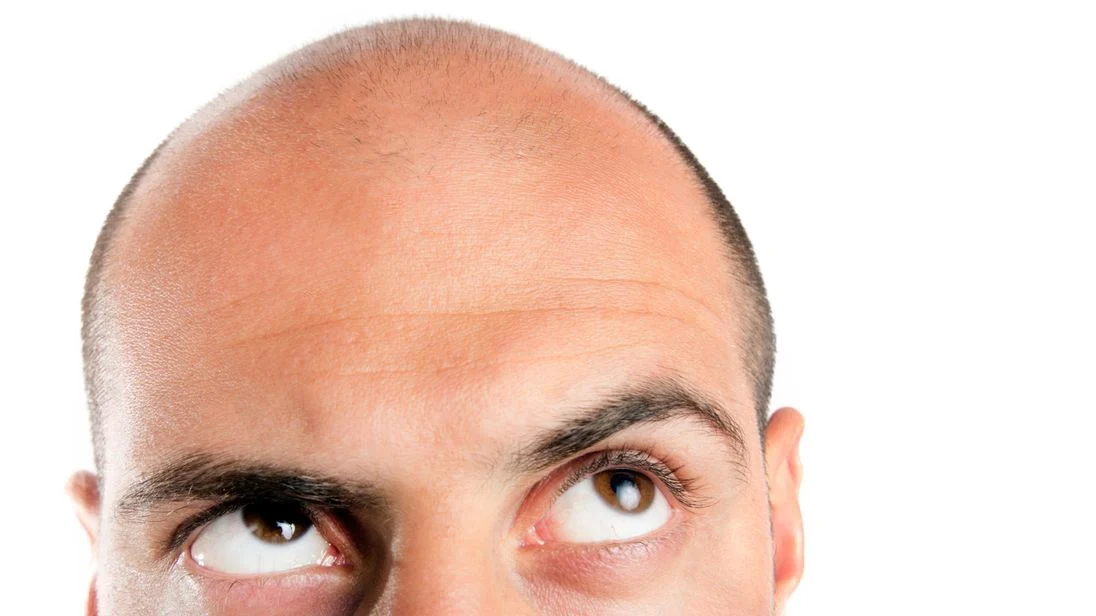The ‘Baldness Gene’ Myth—What Really Causes Hair Loss?

The ‘Baldness Gene’ Myth—What Really Causes Hair Loss?
Hair loss is a topic that touches nearly everyone at some point in their lives. Whether it’s a slow, gradual thinning or a sudden, noticeable receding hairline, the effects of hair loss can have profound psychological and emotional impacts. Among the most common misconceptions is the so-called "baldness gene." This myth suggests that men and women who experience hair loss are simply doomed by genetics, and there’s nothing they can do about it. But what if we told you that the real causes of hair loss are more complex than just a hereditary factor? In this article, we’ll dive into the truth behind hair loss, explore its actual causes, and give you the insight you need to tackle it head-on.
The Baldness Gene: A Simple Explanation?
The "baldness gene" myth is often the first thing people think of when they notice thinning hair. Most people are familiar with the idea that hair loss is primarily caused by genetics. And, to a certain extent, that’s true—genetics do play a role in determining how and when we may lose our hair, but it’s not the entire story.
The gene most commonly linked to hair loss is known as the androgen receptor (AR) gene. This gene regulates the body’s response to androgens, which are male hormones that affect hair growth. For men, the condition most closely associated with genetic hair loss is androgenetic alopecia, also known as male pattern baldness. This condition is often inherited from either the mother’s or father’s side of the family and is characterized by a receding hairline and thinning at the crown NIAMS, 2020.
However, this is where things get a bit more complicated. While genetics can influence hair loss, it’s just one factor among many. Most people don’t realize that hair loss is a complex interaction of environmental, hormonal, and lifestyle factors, alongside genetic predisposition.
Hormonal Imbalance: The Silent Culprit
One of the main causes of hair loss, especially in women, is hormonal imbalance. While it’s common to think that only men experience hair loss due to testosterone and its derivatives, women are not exempt. In fact, hormonal changes in women—such as those that occur during pregnancy, menopause, or even due to thyroid issues—can dramatically affect the health of their hair.
One of the key hormonal culprits behind hair loss is dihydrotestosterone (DHT), a byproduct of testosterone. DHT is particularly harmful to hair follicles as it can shrink them, leading to shorter and thinner hair strands, and in severe cases, permanent hair loss Healthline, 2021. For women, fluctuations in estrogen and progesterone, which can occur during menopause, also increase sensitivity to DHT, leading to thinning hair, particularly on the top of the head AAD, 2020.
Interestingly, people often overlook how stress hormones like cortisol can also influence hair loss. Stress can push hair follicles into a resting phase, meaning they stop producing new hair, and hair loss becomes noticeable. Over time, chronic stress can lead to persistent hair thinning or shedding.
The Nutritional Factor: You Are What You Eat
In today’s fast-paced world, it’s easy to overlook the importance of proper nutrition when it comes to maintaining healthy hair. However, the food we consume plays a significant role in hair growth and overall hair health.
A poor diet can contribute to hair loss in several ways. Deficiencies in essential vitamins and minerals like iron, biotin, vitamin D, and zinc can hinder hair follicle function, leading to hair thinning. The iron deficiency, for example, is often seen in individuals with anemia, a condition where the body doesn’t have enough red blood cells to carry oxygen to tissues, including the scalp Mayo Clinic, 2021.
Biotin, a B-vitamin, is also important for healthy hair growth. It helps strengthen hair and may prevent breakage. Similarly, vitamin D supports the creation of new hair follicles, while zinc is involved in the repair and growth of hair tissue.
An imbalanced diet high in refined sugars and low in whole foods like fruits, vegetables, lean proteins, and healthy fats can exacerbate hair thinning. Proper hydration is also essential—dehydration can lead to dry, brittle hair that is more prone to breakage.
For those battling hair loss, focusing on a nutrient-rich diet can often complement other treatments. Incorporating foods rich in biotin, iron, omega-3 fatty acids, and antioxidants will not only support hair growth but also boost your overall health and well-being.
Lifestyle Choices: Are You Putting Your Hair at Risk?
Your everyday habits may also be contributing to hair loss without you even realizing it. Simple actions like over-styling, excessive heat application, and chemical treatments can have a significant impact on the health of your hair.
Overwashing or using harsh shampoos may strip the scalp of its natural oils, leading to dryness and brittleness. Regular exposure to high heat—whether from straighteners, curling irons, or blow dryers—can weaken hair shafts and result in breakage. Chemical treatments such as dyes, perms, and relaxers also damage the hair structure, making it more prone to falling out Healthline, 2021.
Moreover, tight hairstyles such as ponytails, braids, or buns that pull on the scalp can cause a type of hair loss called traction alopecia, which results from the tension placed on hair follicles. If the hair is pulled too tightly for extended periods, the follicles may weaken, leading to permanent damage AAD, 2020.
On the other hand, healthier lifestyle habits can contribute to hair vitality. Regular scalp massages can promote blood flow to hair follicles, supporting growth. Staying active, getting enough sleep, and managing stress are all essential steps in nurturing healthy hair.
Medical Conditions and Medications: The Unseen Factors
Certain medical conditions and medications can also trigger hair loss. For instance, autoimmune diseases like alopecia areata cause the immune system to attack hair follicles, leading to hair shedding in small patches. Thyroid problems, such as hypothyroidism or hyperthyroidism, are also known to cause thinning hair or shedding due to hormonal imbalances Mayo Clinic, 2021.
Medications, particularly those used in chemotherapy or for conditions like high blood pressure, arthritis, or depression, can also lead to temporary or permanent hair loss. For instance, drugs that affect hormone levels—such as birth control pills or steroids—can interfere with the normal hair growth cycle.
Scalp infections like ringworm or fungal infections can also damage hair follicles, causing hair loss. Infections can cause the scalp to become inflamed, which disrupts the hair growth process.
The Hair Growth Cycle: It’s All About Timing
Understanding the natural hair growth cycle can also shed light on why hair loss occurs. Hair grows in a cycle made up of three stages: anagen (growth), catagen (transitional), and telogen (resting). Under normal conditions, about 85-90% of your hair is in the anagen phase, and hair grows about half an inch per month AAD, 2020.
However, various factors—such as stress, hormonal imbalances, or nutritional deficiencies—can cause hair follicles to prematurely enter the telogen phase, which leads to shedding. The cycle then becomes imbalanced, and you may experience noticeable thinning or bald patches. Typically, people lose 50 to 100 hairs per day, but when the hair loss is more significant, it can become a concern.
What Can You Do About It?
Now that you have a better understanding of the causes behind hair loss, the next question is: what can you do about it? While some degree of hair thinning may be inevitable, there are several treatments and lifestyle changes that can help you manage and even reverse the process.
- Minoxidil: This over-the-counter topical treatment is widely used to encourage hair regrowth, particularly for those with male or female pattern baldness. It works by stimulating hair follicles and promoting hair growth WebMD, 2020.
- Finasteride: For men, finasteride is a prescription medication that blocks the production of DHT, the hormone responsible for shrinking hair follicles Mayo Clinic, 2021.
- Hair Transplants: In cases of severe hair loss, hair transplant surgery is an option that involves moving hair follicles from a fuller area of the scalp to the thinning or balding areas American Hair Loss Association, 2020.
- PRP Therapy: Platelet-Rich Plasma (PRP) therapy involves drawing blood from your body, processing it, and injecting the platelets into the scalp to stimulate hair growth Mayo Clinic, 2021.
- Healthy Lifestyle: Focusing on proper nutrition, reducing stress, getting adequate sleep, and taking care of your scalp and hair with gentle products can have a big impact on overall hair health.
- Hair Growth Shampoos: Specially formulated shampoos and conditioners designed to strengthen hair can also support the growth cycle, especially if they contain ingredients like biotin or keratin.
Conclusion: Knowledge Is Power
The "baldness gene" is just one piece of the puzzle when it comes to hair loss. The truth is, hair thinning and loss can result from a mix of genetic factors, hormones, lifestyle choices, diet, stress, medical conditions, and even medication. By understanding the root causes and addressing them with a combination of clinical treatments and everyday care, you can make informed decisions about how to manage your hair health.Remember, hair loss isn’t something to fear—it’s a natural part of life for many. With the right knowledge and approach, you can navigate the process with confidence and take action to protect and promote healthy hair. Whether you’re looking for medical treatments, lifestyle changes, or just a little extra self-care, there’s always something you can do to help maintain a full, vibrant head of hair.







